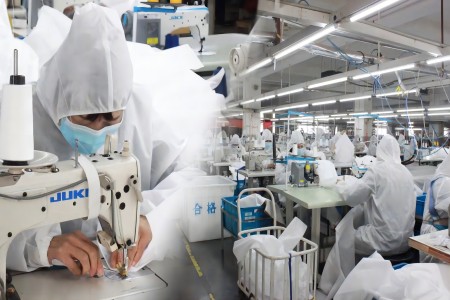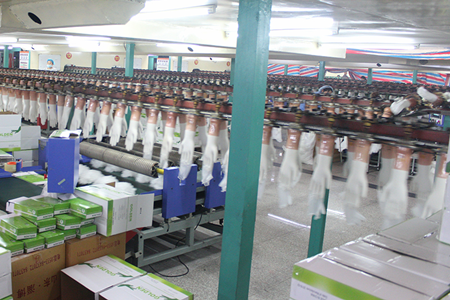2023/9/21

The Importance of Disposable Coveralls for Workplace Safety
When it comes to workplace safety, there is no room for compromise. Every year, millions of workers worldwide suffer from injuries, illnesses, and even deaths caused by workplace hazards. This not only affects the workers' health and well-being but also has significant economic and social impacts. Workplace safety is crucial not only for protecting workers but also for ensuring business continuity and promoting sustainable development. Therefore, it is essential to provide workers with the necessary protective gear to minimize the risks and hazards they face on the job. One of the most critical safety gear is disposable coveralls.
Types of Disposable Coveralls
Disposable coveralls come in various types, sizes, and materials, depending on the specific workplace hazards they are designed to protect against. Some of the common types of disposable coveralls include:
1. Chemical-resistant coveralls
Chemical-resistant coveralls are designed to protect against chemical splashes, spills, and sprays. They are made of materials that can resist penetration by various chemicals, including acids, alkalis, solvents, and oils. Chemical-resistant coveralls are essential for workers who handle hazardous chemicals or work in environments where chemical exposure is likely.
2. Protective coveralls
Protective coveralls are designed to protect against a wide range of workplace hazards, including dust, dirt, debris, and infectious agents. They are made of materials that can provide barrier protection against these hazards, such as microporous film, polypropylene, or SMS (spunbond-meltblown-spunbond) fabric. Protective coveralls are suitable for workers in industries such as construction, food processing, healthcare, and janitorial services.
3. Flame-resistant coveralls
Flame-resistant coveralls are designed to protect against flames, sparks, and other sources of heat. They are made of materials that can withstand high temperatures and prevent the spread of fire, such as Nomex, Kevlar, or carbon fiber. Flame-resistant coveralls are essential for workers in industries such as welding, firefighting, and oil and gas.
Benefits of Using Disposable Coveralls
Disposable coveralls offer several benefits for workplace safety, including:
1. Protection against workplace hazards
Disposable coveralls provide a barrier against various workplace hazards, such as chemicals, dust, dirt, debris, and infectious agents. They can help prevent skin contact, inhalation, or ingestion of these hazards, which can cause injuries, illnesses, or even death.
2. Convenience and hygiene
Disposable coveralls are designed to be worn once and then discarded, making them a convenient and hygienic option for workplaces that require frequent changes of protective clothing. They eliminate the need for laundering, sterilizing, or repairing reusable coveralls, which can save time, money, and effort.
3. Cost-effectiveness
Disposable coveralls are affordable and can be purchased in bulk, making them a cost-effective choice for businesses of all sizes. They can help reduce the cost of maintaining and replacing reusable coveralls, as well as the cost of medical treatment and compensation for workplace injuries and illnesses.
Disposable Coverall Materials and Features
Disposable coveralls are made of various materials and can have different features, depending on the specific workplace hazards they are designed to protect against. Some of the common materials and features of disposable coveralls include:
1. Polypropylene
Polypropylene is a lightweight and breathable material that provides basic protection against dust, dirt, and other non-hazardous materials. It is suitable for workers in industries such as food processing, agriculture, and general maintenance.
2. Microporous film
The microporous film is a breathable and liquid-resistant material that protects against hazardous chemicals and infectious agents. It allows air and moisture to pass through while blocking liquids and particles. It is suitable for workers in industries such as healthcare, pharmaceuticals, and laboratories.
3. Elastic cuffs and ankles
Elastic cuffs and ankles can help prevent the entry of hazardous materials into the sleeves and legs of disposable coveralls. They can also provide a snug fit and enhance mobility and comfort for workers.
4. Hood and boots
Hood and boots can provide additional protection for workers' heads and feet, particularly in hazardous environments where chemical splashes or spills are likely. They can also help prevent the spread of infectious agents.
Regulations and Standards for Disposable Coveralls
Disposable coveralls are subject to various regulations and standards, depending on the specific workplace hazards they are designed to protect against. Some of the common regulations and standards for disposable coveralls include:
1. Occupational Safety and Health Administration (OSHA)
OSHA is a federal agency that sets and enforces safety and health standards for workers in the United States. OSHA requires employers to provide workers with appropriate protective gear, including disposable coveralls, to minimize the risks and hazards they face on the job.
2. National Fire Protection Association (NFPA)
NFPA is a global organization that develops and publishes standards and codes for fire protection and life safety. NFPA 2113 and 2112 are two standards that guide the selection, use, and maintenance of flame-resistant clothing, including coveralls.
3. European Union (EU)
The EU has various regulations and standards for protective clothing, including disposable coveralls, under the Personal Protective Equipment (PPE) Directive. The PPE Directive requires manufacturers to ensure that their products meet specific health and safety requirements and carry the CE marking.
Conclusion and Final Thoughts
Disposable coveralls are essential protective gear for workers in hazardous environments. They offer protection against various workplace hazards, such as chemicals, dust, dirt, debris, and infectious agents. They are convenient, hygienic, and cost-effective, making them a popular choice for businesses of all sizes. When selecting disposable coveralls, it is essential to consider the specific workplace hazards and regulations and standards that apply to your industry. By providing workers with the necessary protective gear, businesses can ensure workplace safety, promote employee well-being, and achieve sustainable development.




 WhatsApp
WhatsApp
Send us your message
You can send an email asking for the price and detailed information of this product. We will reply you as soon as we receive your email